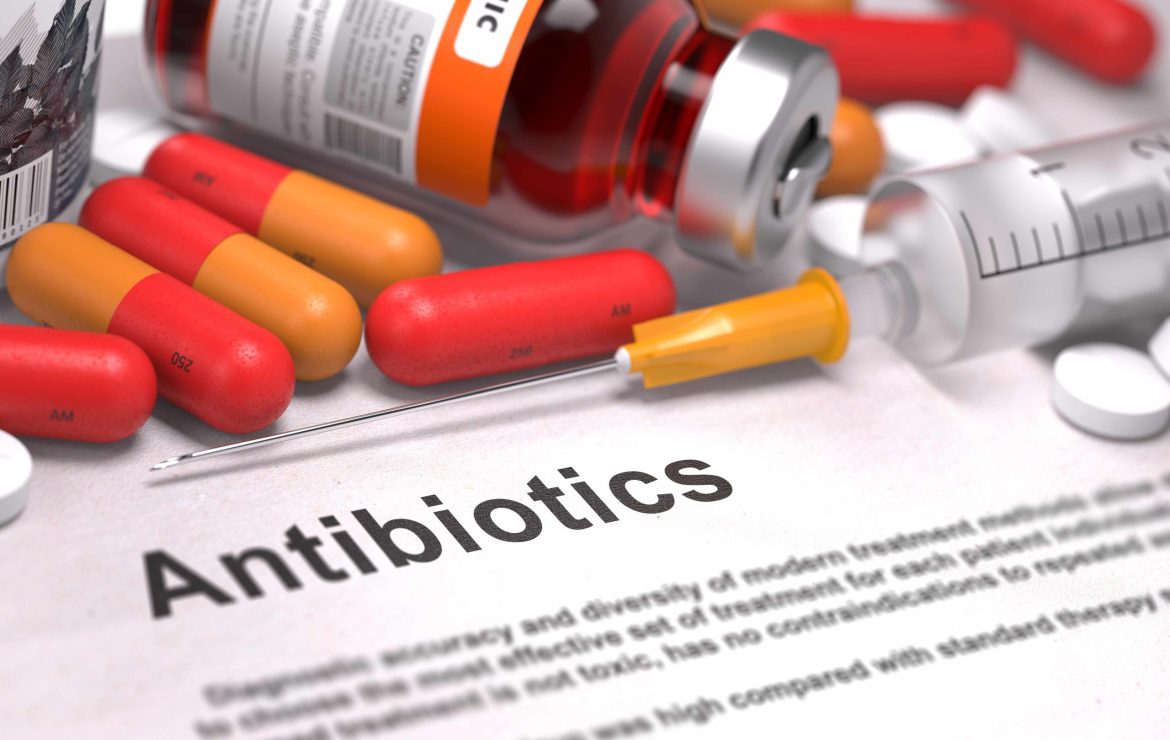Antibiotics are a class of medicines used to treat and fight infections caused by bacteria, such as sore throat, whooping cough, urinary tract infections, and other bacterial infections. Therefore, they are called antimicrobials, due to their effective role in preventing the spread of diseases and reducing serious disease complications caused by different types of bacteria.
Antibiotics treat infections caused by bacteria, but they do not treat infections caused by viruses.
For instance, an antibiotic is the right treatment for streptococcal pharyngitis caused by bacteria, but it is not the right treatment for most sore throats, which are caused by viruses.
Moreover, they are an important tool for treating common infectious diseases like pneumonia, and some life-threatening conditions like sepsis.
Types of Antibiotics and How They Work
There are many types of antibiotics, which are classified according to their mechanism of action. Some antibiotics kill bacteria by destroying cell walls and preventing them from building cell components.
Other types of antibiotics rely on stopping vital processes in bacteria and preventing them from multiplying.
Therefore, a single type of antibiotic cannot kill all types of bacteria. Choosing an antibiotic depends on many factors, including the type of bacteria causing the infection, the nature and severity of the infection, the affected area, bacterial resistance to antibiotics, and other factors the doctor takes into account before prescribing an antibiotic.
Side Effects
Like all medications, antibiotics have potential side effects. Some common side effects include nausea and vomiting, diarrhoea and stomach pain. Some women may also get vaginal yeast infections. In rare cases, antibiotics can cause an allergic reaction that may require medical care like rash, swollen tongue and face, and difficulty breathing.
Antibiotic Resistance
Antibiotic resistance is one of the most pressing global health issues today. Antibiotic-resistant bacteria are types of germs that are not affected by antibiotics.
Antibiotics do not hamper the activity of these types of bacteria or cause any change in their effectiveness.
This problem arises when antibiotics do not fully succeed in tackling certain bacterial strains due to the natural development of resistance in bacteria from genetic mutations or improper and excessive use of antibiotics, which is one of the main factors leading to antibiotic resistance.
Approximately one-third of antibiotic use in humans is unnecessary or inappropriate, according to the Centers for Disease Control and Prevention. Each time antibiotics are taken incorrectly or repeatedly, it can lead to increased bacterial resistance and the passing on of these resistant traits to future generations of bacteria.
Other factors contributing to increased antibiotic resistance include using antibiotics to treat viral infections. As a result, the antibiotic attacks beneficial or harmless bacteria present in the body.
This incorrect treatment can promote antibiotic-resistant properties in harmless bacteria, which can share those properties with other bacteria, or allow resistant and potentially harmful bacteria to take the place of beneficial bacteria.
Common viral infections where antibiotics do not help include:
Colds or runny nose
Influenza
Bronchitis and most coughs
Certain ear infections and sinusitis
Additionally, stopping antibiotic doses before the prescribed end date, especially when symptoms improve, can cause the symptoms to return more severely or provide an opportunity for bacteria to develop immunity against that antibiotic and resist it in the future.
Other negative effects of antibiotic resistance include:
Longer recovery periods and increased severity of illness
Spread of infection to others
More hospital visits or longer stays with increased treatment costs
Managing Antibiotic Use
The proper use of antibiotics greatly helps protect people from resistant infections and avoid their adverse effects. Therefore, it is important to:
Avoid self-diagnosis and consult your doctor who will diagnose the illness and prescribe the right antibiotic if it’s a bacterial infection.
Get accurate information from trusted health sources that explain proper antibiotic use.
Do not stop taking the prescribed antibiotic as soon as symptoms improve; complete the full course of treatment as per the prescribed dose, frequency and number of days specified by the treating doctor to ensure the disease-causing bacteria are killed and the infection is effectively treated.
Dispose of leftover antibiotics and avoid keeping them for future use and sharing them with anyone else. Consult your doctor whenever you get an infection for proper diagnosis and treatment.
Avoid misusing antibiotics. Many people incorrectly use them to treat colds, fever or mild symptoms like childhood diarrhoea.
Adhere to the following preventive measures:
Regularly wash and sanitise your hands
Cover your mouth and nose when coughing and sneezing
Stay home when sick
Get recommended vaccinations like the flu shot
By: Dr. Badreyya Al-Harmi, Consultant Public Health, Emirates Public Health Association













